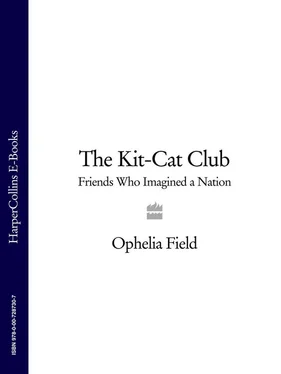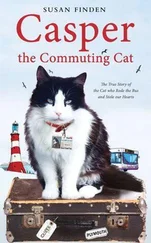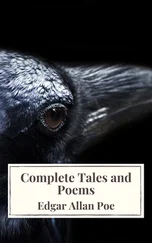The Kit-Cats' published propaganda was more restrained. Tonson's press, for example, published The Golden Age Restor'd (1703), which was a sarcastic call to arms, suggesting the Jacobites should oust the few remaining Whigs at Court as the prelude to a Franco-Jacobite invasion. 6 Written by William Walsh, the poem was printed anonymously and its authorship mistakenly attributed to Arthur Maynwaring, who almost lost his commission at the Customs House as a result. Yet Maynwaring did not break ranks and betray the poem's true author. The Kit-Cats stood collectively behind the publication's anonymity, just as the Tories concealed the author of their reply, The Golden Age Revers'd (1703), which reviled the Kit-Cat Club as a gang of hubristic conspirators. 7
Tonson departed for Holland soon after the March meeting. Now 47 and balding (‘spacious brow[ed]’, as one poet delicately put it 8 ), he travelled this time with the youngest Kit-Cat: the indolent 19-yearold Charles Fitzroy, 2nd Duke of Grafton (grandson of Charles II and his mistress Barbara Villiers), who had joined the Club upon reaching his maturity. Vanbrugh thought Tonson would find it amusing to hear that the Tories suspected the bookseller of travelling as a Junto messenger destined for Hanover, and that his subscription list to a new edition of Ceasar's Commentaries was rumoured to be a sinister list of rebels plotting to overthrow Queen Anne. While Tonson's subscription lists were not without political subtext, there was no such undercover mission. It was simply a trip to acquire new texts, typeface and paper from the Continent.
Tonson left his nephew, Jacob Tonson Junior (brother to Elizabeth and uncle to Steele's illegitimate child; referred to hereafter as ‘Jacob Junior’ to avoid confusion) in charge of the publishing firm. This partnership would continue after Tonson's return, and from this date forward it is often unclear which of the two Tonsons was responsible for particular publications or business decisions. Despite the trust placed in Jacob Junior, however, there is evidence that he did not feel unalloyed affection for his domineering uncle.
Vanbrugh, trusted as closely as Tonson's nephew, was left in charge of the renovation work at Barn Elms. He travelled there to inspect the site amid unseasonably heavy rains in June 1703, and reported to Tonson that the carpenters had been neglecting the job for the past fortnight: ‘[E]very room is chips—up to your chin!’ The neighbours had also failed to steal the peas and beans from Tonson's kitchen garden, so that they hung rotting on the vine. Vanbrugh assured Tonson, with a gentle jibe at Tonson's aspirations for the modest property, that the house would soon be ready ‘for the reception of a king’. 9
Other Kit-Cat Club members took an active interest in the Barn Elms works, supporting the theory that it was intended to become a Club venue. Congreve told Tonson in Amsterdam: ‘I believe Barn Elms wants you and I long to see it but don't care to satisfy my curiosity before you come.’ 10 Vanbrugh wrote, meanwhile, that ‘the Kit-Cat wants you much more than you ever can do them…Those who remain in town are in great desire of waiting on you at BarnElms.’ 11
This last statement emphasizes how central Tonson remained as Club secretary and chairman, even now that the Club's membership had expanded to include more than a dozen peers of the realm. A month later, Vanbrugh complained again: ‘The Kit-Cat…will never meet without you, so you can see here's a general stagnation for want of you.’ 12 The Duke of Somerset sent the same message, though in a more imperious tone: ‘Our Club is dissolved, till you revive it again; which we are impatient of.’ 13 Congreve, Vanbrugh and Halifax drank a toast to Tonson's quick return one day that summer at Hampton Court, ‘as we were sopping our Arses in the Fountain, for you must know we have got some warm weather at last’. 14
Yet Tonson's position remained, at the same time, precarious. Though still the Club's convener and nominal host, he seems to have also been the butt of the Club's raillery during repeated rifts between the publisher and his Kit-Cat authors. A satirical advertisement was printed in January 1704, ostensibly composed by Tonson to deny that he was ‘infamously expelled a certain Society called the K-t C-t Club’ as a result of his ‘ill-timed freedom with some of the Principal Members at the Reading of a Late Satire upon his Parts and Person’ and also to deny he was ‘since Clapped up in a Madhouse’. To the contrary, the advertisement explained, Tonson had withdrawn himself voluntarily ‘in scorn of being their Jest any longer’ and ‘walks the public Streets without a Keeper’. 15 The notice has the tone of an inside joke, meriting speculation about the incident behind it. What was the ‘Late Satire’? Was it Faction Display'd (1704), William Shippen's poem which incorporated three lines mocking Tonson's freckles and lameness? And what was Tonson's ‘ill-timed freedom’? Could it be, as the phrase suggests, that the tradesman had finally taken a liberty too far?
Another poem, The Kit-Cats , written sometime before June 1704, seems to refer to the same rift. Structured around an allegory in which the Club's literary members rebel against Tonson's authority (‘They cry he Sep'rate Interest Carries on, / Pretends their Profit, but designs his own’), the poem is the literary bruise remaining after a fight which history has forgotten. 16 Again, two sources dating to 1705 refer to Tonson being so severely teased by the Club's members that he talked of leaving them: a poem referred to Tonson being ‘Sullen through his late ill-Usage’ at the Club, 17 while a play called The Quacks showed ‘Stationer Freckle’ feeling aggrieved when his authors teased him in their verses. A private letter from Halifax to another Kit-Cat confirms Tonson bore the brunt of the Club's raillery, and was growing sick of it: ‘Our friend Jacob seems to have abdeclared [i.e. abdicated] his government of the Chit-Kat…[T]hey had teased him so unmercifully of late that I fancy he intends to leave them.’ 18
Another, later poem described Tonson as having ‘more Humours than a dancing Bear’ but ultimately being persuaded to reconcile with his Kit-Cat authors. 19
As Vanbrugh helped Tonson realize his social aspirations at Barn Elms, so he continued to help Carlisle confirm his family's status—as well as Carlisle's personal educational and cultural status—at Castle Howard. With time on his hands since the Queen had relieved him of his Treasury office, Carlisle was able to personally oversee the construction site there. That summer of 1703, some 200 men were working on the Yorkshire house and gardens. When work had hardly begun, Carlisle took a party of friends, including Kit-Cats Kingston, Grafton, Wharton and William Cavendish, for an impromptu site inspection, demonstrating that the project was, from the start, distinctly Whiggish.
Carlisle's aesthetic, like Vanbrugh's, seems to have gained definition through exchanges at the Kit-Cat Club. Though the Kit-Cats published no manifesto, we can retrospectively discern an unwritten manifesto directing all their cultural projects, whether literary or architectural. This manifesto involved competing with French culture but not, as might be expected, rejecting it wholesale. The Kit-Cats drew from French comedies, architecture and gardening manuals, just as they imported other Continental models from Venice or Vienna, but they aimed to modify all these European imports and so establish a more ‘modern’ and distinctively English brand of neoclassicism. Vanbrugh tried to temper the baroque style, associated as it was with Europe's absolute monarchies, with historical English elements—for example, long Jacobean galleries—and with numerous visual allusions to the Roman republic that the Whigs considered the classical parallel to their constitutional monarchy.
Читать дальше












